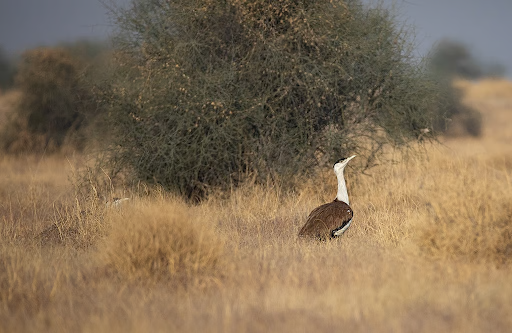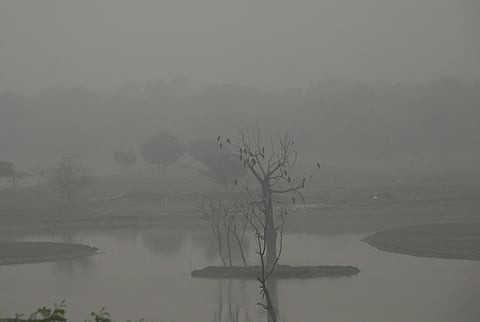




Source: HINDU
Disclaimer: Copyright infringement not intended.
The discovery of the Bone Collector caterpillar on the Hawaiian island of Oahu has drawn significant scientific interest due to its unusual carnivorous behavior and evolutionary significance.
|
Feature |
Details |
|
Discovery |
Found exclusively in a small patch of mountain forest on Oahu, Hawaii. |
|
Nickname |
Bone Collector due to its use of prey body parts to construct its case. |
|
Diet |
Carnivorous; feeds on insects caught in spider webs. |
|
Case Construction |
Builds a protective silk case adorned with parts of prey (ant heads, fly wings). |
|
Evolutionary Significance |
Estimated lineage age: at least six million years, predating the formation of the Hawaiian Islands. |
|
Habitat Threat |
Vulnerable due to invasive species impacting its isolated forest habitat. |
Unlike typical herbivorous caterpillars, it actively preys on insects.
Utilizes the body parts of its prey to camouflage and protect itself.
Feeds on insects trapped in webs, an unusual feeding strategy for caterpillars.
|
Feature |
Details |
|
Location |
Pacific Ocean; 50th U.S. state. |
|
Islands |
8 main islands — Hawaii (Big Island), Maui, Oahu, Kauai, Molokai, Lanai, Niihau, Kahoolawe. |
|
Capital |
Honolulu (located on Oahu). |
|
Geological Origin |
Formed by volcanic activity over a geological hotspot. |
|
Landscape Diversity |
Active volcanoes, tropical rainforests, beaches, cliffs. |
|
Ecological Sensitivity |
Highly endemic biodiversity; ecosystems vulnerable to invasive species and climate change. |
|
Aspect |
Details |
|
Definition |
Larval stage of insects belonging to the order Lepidoptera (butterflies and moths). |
|
Diet (General) |
Mostly herbivorous; feed on leaves, flowers, and other plant parts. |
|
Rare Exceptions |
Some species (e.g., Bone Collector, Hawaiian carnivorous caterpillars) are carnivorous. |
|
Body Structure |
Segmented body with three pairs of true legs and several pairs of prolegs. |
|
Defense Mechanisms |
Camouflage, mimicry, toxic hairs, bad taste to predators. |
|
Importance in Ecosystem |
Act as herbivores, prey for birds and other animals; important for pollination (post metamorphosis). |
|
Metamorphosis |
Undergo complete metamorphosis — from egg → larva (caterpillar) → pupa → adult butterfly/moth. |
Sources: HINDU
|
PRACTICE QUESTION Q. Consider the following statements regarding the Bone Collector caterpillar:
Which of the statements given above are correct? (a) 1 and 2 only (b) 2 and 3 only (c) 1 and 3 only (d) 1, 2 and 3 Answer: c Explanation: Statement 1 is correct. Endemic means found naturally only in a particular location. The Bone Collector caterpillar has been discovered only on the Hawaiian island of Oahu specifically in a small, isolated mountain forest. Thus, it is endemic. Statement 2 is incorrect. Unlike typical caterpillars that are herbivorous (feeding on plant leaves), the Bone Collector caterpillar is carnivorous. It feeds on insects trapped in spider webs. Statement 3 is correct. This is a unique behavior. The Bone Collector caterpillar builds a case using its own silk combined with parts of its prey, like ant heads and fly wings. This camouflage helps it avoid predators. |






© 2026 iasgyan. All right reserved